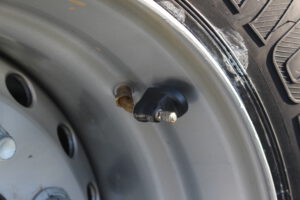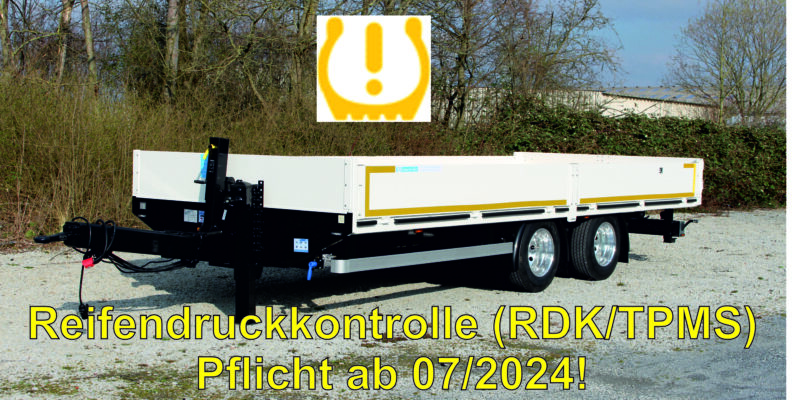The countdown is on! In just under 70 days from July 2024, all newly registered vehicles must be equipped with a tyre pressure monitoring system (TPMS). This is regulated in UN ECE-R141. The main requirement in the regulation: if a tyre pressure loss of 20% or a malfunction occurs, the driver must receive a warning in the cab within 10 minutes.
What is this supposed to achieve?
More safety on our roads! The RDK/TPMS warns the driver of problems in real time and thus helps to prevent accidents.
Greater efficiency! The correct tyre pressure makes the tyre more efficient and durable, reducing downtime and maintenance costs.
Sustainability! The right tyre pressure optimises fuel consumption and therefore reduces costs.
Our important message to you: we are well prepared for this and have had our vehicles tested and approved with the new equipment!
In our price list valid since March 2024, we have included the necessary equipment for tyre pressure monitoring.
This necessary equipment will be
Each wheel must be fitted with a sensor.
A control unit is required as an electronic interface to the brake system for the sensor messages
Communication between the control unit and the towing vehicle requires an electronic braking system (EBS)
We have tested and approved TPMS systems from various manufacturers for our low-loaders and tippers. We start with the following equipment and offer the following solution for our vehicles for the implementation of UNECE R-141:
1. as we need maximum flexibility with regard to tyre sizes or manufacturers in order to be able to meet the various customer requirements, we will start with a system with screw-on valves from BPW. This means that the valve sensors can simply be unscrewed and reused in the event of defective tyres. If the batteries in the sensors fail, it is easier to replace them without removing the tyre cover. Replacement wheels do not have to be fitted with sensors, but can simply be retrofitted.

However, the vehicle owner still needs to know that each sensor must be electronically assigned to a wheel! Otherwise he will constantly receive error messages.
Re 2: The BPW control system we have installed offers entry into telematics and thus a great additional benefit through digital data retrieval: detailed information on tyre pressure and temperature, retrieval and monitoring of EBS data, alarm settings, introduction of a digital maintenance calendar, retrieval of the vehicle position, etc. are possible
Re 3: The electronic interface also requires an EBS brake system – in other words, older ABS brake systems are a thing of the past. The required tyre pressure control cannot be implemented via this. All air-braked low-loaders and tippers will have to be equipped with EBS brake systems in the future!
The use of EBS brake systems in combination with parabolic spring units is rather exotic on the market and can lead to technical problems. However, as we have been using EBS brake systems in our trailers over 10 tonnes since 2013 and have already gained a lot of experience in this area, this changeover will not be a major challenge for us!
All 8.9 tonne low-loaders and tippers now come with automatic parking and spring-loaded brakes as standard! The 8.9t vehicles can also be ordered loaded to 9.5t GG – only the tyres change. The customer automatically has 600kg more payload.
It is not possible to equip the 5-tonne vehicles with spring-loaded brakes, as the appropriate cylinders are not available. They are still supplied with crank brakes, but are also fitted with the EBS brake system.

